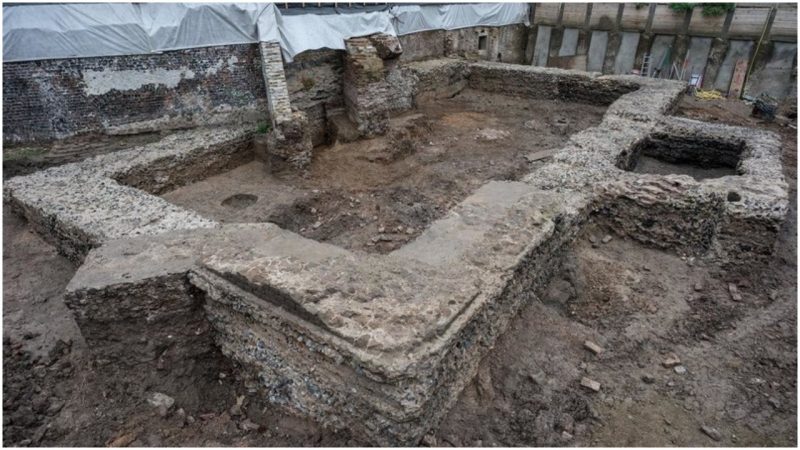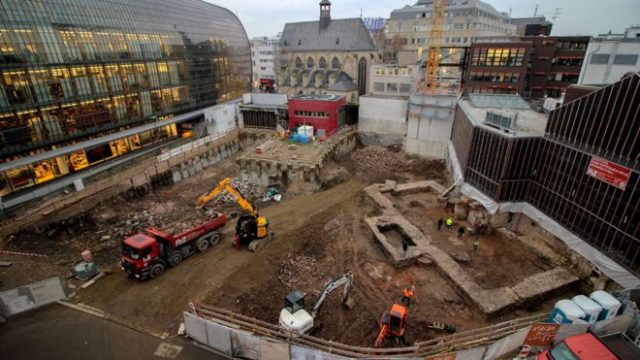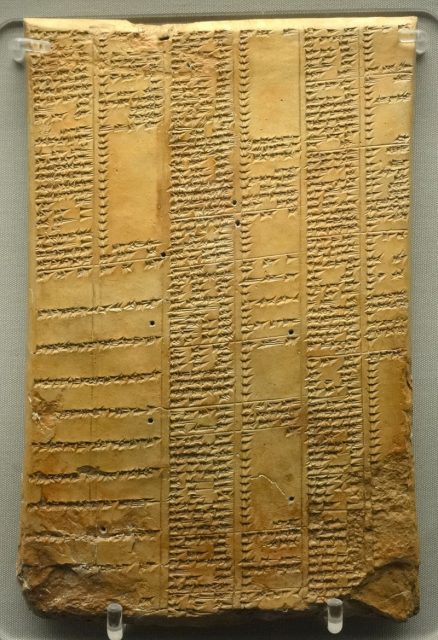Sep 10, 2018 Taryn Smee

Humans have always had a thirst for knowledge; archaeologists have found evidence of libraries from ancient Sumeria, where tablets and scrolls were shown to be ordered by subject, usually stored in a temple or royal palace.
The most famous and largest library from the classical period is the Library of Alexandria in Egypt which existed during the 3rd century and was inspired by the Royal Library of Ashurbanipal. Neither of these libraries have survived, but the human quest for answers traces a thread through all civilizations.

The ancient statue positioned in front of the Library of Alexandria (aka Bibliotheca Alexandrina or Maktabat al-Iskandarīyah) evoking the spirit of the original library. Alexandria, Egypt – July 19, 2016.
The ancient Greeks were avid collectors of books. Aristotle maintained such an impressive private library that it was one of the first to be extensively discussed in early texts. The Romans were also big fans of the library idea and kept vast, fascinating private collections and built public libraries not only in Rome but throughout the Empire.

Ruins of the Library of Celsus in the ancient Greco-Roman city of Ephesus. Selçuk, Turkey.
The Cologne ruins were originally discovered in 2017 during an excavation of a Protestant church in the center of Cologne. The archaeologists working on the site knew the ruins were of Roman origin but have only recently identified its use as a library.
Archaeologists who made the discovery are placing the library as far back as the 2nd century AD and say that it could have held as many as 20,000 scrolls.

Cityscape of Cologne, Germany.
The discovery looks set to become one of the earliest examples of a public library in Northern Europe. The excavation team from the Roman-Germanic Museum of Cologne were able to draw parallels from other ancient Roman libraries, such as the ancient library at Ephesus.
The walls of the ruins in Cologne have niches carved into the walls where the scrolls would have been stored. Dr. Dirk Schmitz of the Roman-Germanic Museum of Cologne told the Guardian, “It took us some time to match up the parallels – we could see the niches were too small to bear statues inside. But what they are are kind of cupboards for the scrolls.”

The walls of the ancient library have niches carved into the walls where scrolls would have been stored. Photo by Roman Germanic Museum of Cologne
Cologne has a long history as an important strategic location. It has been inhabited since 38 BC and became a Roman provincial city around 50 AD. Due to the age of the city, finding Roman ruins during an excavation is not surprising, however, the understanding that the building is a library has led to speculation that there may be many more libraries that have gone undiscovered.

Cuneiform synonym list tablet from the Library of Ashurbanipal. Neo-Assyrian period (934 BC – 608 BC). Photo by Fæ CC BY-SA 3.0
As Dr. Dirk Schmitz theories in The Guardian, “Perhaps there are a lot of Roman towns that have libraries, but they haven’t been excavated. If we had just found the foundations, we wouldn’t have known it was a library. It was because it had walls, with the niches, that we could tell.”
The oldest working library in Germany is said to be the Bibliotheca Bardensis in Barth, Northern Germany, which is first mentioned in 1398. The oldest working library in the world is said to be Al-Qarawiyyin Library in Morocco which opened its doors in 859 AD and is still open to the public to this day.
Another library that could claim the title is St. Catherine’s Monastery Library, a UNESCO world heritage site located on the foothills of Mount Sinai, which has existed since 565 AD and has the second largest collection of ancient manuscripts and codices, just behind the Vatican.
